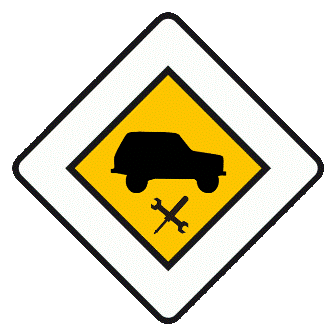
Niva-Centre: Lada Niva Servicing and Repair
| About us | Main | Pricelist | Buy Niva | Links | Contacts | Information |
 |
metal works, quenching vibrations, electric repair, wheels assemling, repair and balancing, body protection, windscreen change
Niva-Centre: Lada Niva Servicing and Repair
factory required mainteinance, oil change in engine and transmission, reduction drive repairs, differential repairs, injector system flash
|
|
||||||||||||||
|
||||||||||||||||
|
||||||||||||||||
What maintenance includesMaintenance works may be divided into two categories. [Service operations could be divided into two groups.]
Thus it is relevant to speak of maintenance in certain 'wider' sense, and that is actually a way how most car owners carry out preventive service of their vehicles. Service operations list differs with vehicle's age and mileage. For a new car an accent is on checking a "running in" - a limited in duration process of operation under lower load and speed to let moving parts wear against each other, and tightening of some bolt joints and mounts. For that matter most important is first service performed between 1500 and 2500 km mileage. For cars older than 3-4 years whose mileage exceeds 40-60 000 km (for Niva and Niva-Chevrolet cars) maintenance accent shifts to diagnostics and detection of units that show any signs of excessive wear or other mechanical damage. There are maintenance works for Niva owners to pay extra attention, these are: Lubrication of cardan drive shafts and adjustment of front wheel hub bearings. Lack of grease in shafts leads to vibration, usually at approx. 90 km/h, while driving vehicle with wrong hub play [bearing backlash] - to replacement of hub altogether with its bearings, usually in most awkward circumstances.
Maintenance timingFirst scheduled maintenance niva car undergo after 1500-2500 km run, that is nearly just after it was taken away from seller's showroom. As we are not manufacturer's official dealer, we recommend to perform first scheduled maintenance where you had bought a car, it may happen that you would have to replace something expensive under manufacturer's guarantee. If before first scheduled maintenance major fault in new vehicle had not been disclosed, thereafter probability of such mishap plunges and it is possible to make choice in favor of independent non-official service. If your car is holding a guarantee of an official dealer, it is good idea before visiting them on scheduled maintenance call us for diagnostics and advice anyway. As for subsequent scheduled services now (2020) factory recommends maintenance interval, the span between scheduled servicing, to be equal 15000 km. From the moment first niva 2121 was introduced maintenance interval was 10000 km. For front-wheel driven passenger models AvtoVAZ started to recommend extended maintenance interval somewhere since mid-2000s, while 'classic' niva 21214 service book issued in 2012 still mentions 10000 -km service interval. Thus there is certain level of chaos in official timing recommendations. Longer maintenance intervals are justified in some sense. From mid-1990s oil quality in retail stores noticeably improved (provided it is not counterfeit), while manufacturer doggedly fights for quality of its car components. Mileage between scheduled servicing specifically for niva cars is also determined by period between cardan drive shaft lubrications. Namely, slip spline joints, from where grease is easily squeezed out, and crosses (if latter present in your car). Probably most other maintenance tasks could wait a while. Niva's engine differs from that engineered in 1970s for rear wheel driven lada passenger cars mainly in attempt to get maximum horsepower without significant change in cylinder block and head. Cardan drive shafts are basically the same and require frequent lubrication. Thus we recommend stick to an 'old' interval between maintenances of 10000 km. Self-maintenance: tasks to perform by yourselfIt is good thing to do periodically your own inspection, for example once in a fortnight the following: Inspect wheels (is there a non-even tire thread wear, make sure all are visually look the same). Park on the clean space in the evening and check for wet spots on tarmac next day. Open bonnet and check whether engine is dry and if there is coolant in its reservoir, oil in engine sump;
check whether headlamps and park lights work, It is advised to pay attention when the car is running whether there is some new sound present, and if car maintain straight course when you release a steering wheel for a couple of seconds (first make sure that is not dangerous). If you had noticed something unusual, probably your car's maintenance is overdue )
|
|
©2unitS 2003 | ||||||||||||||||
| © Nivacentre 2007-2018 | |||||||||||||||||